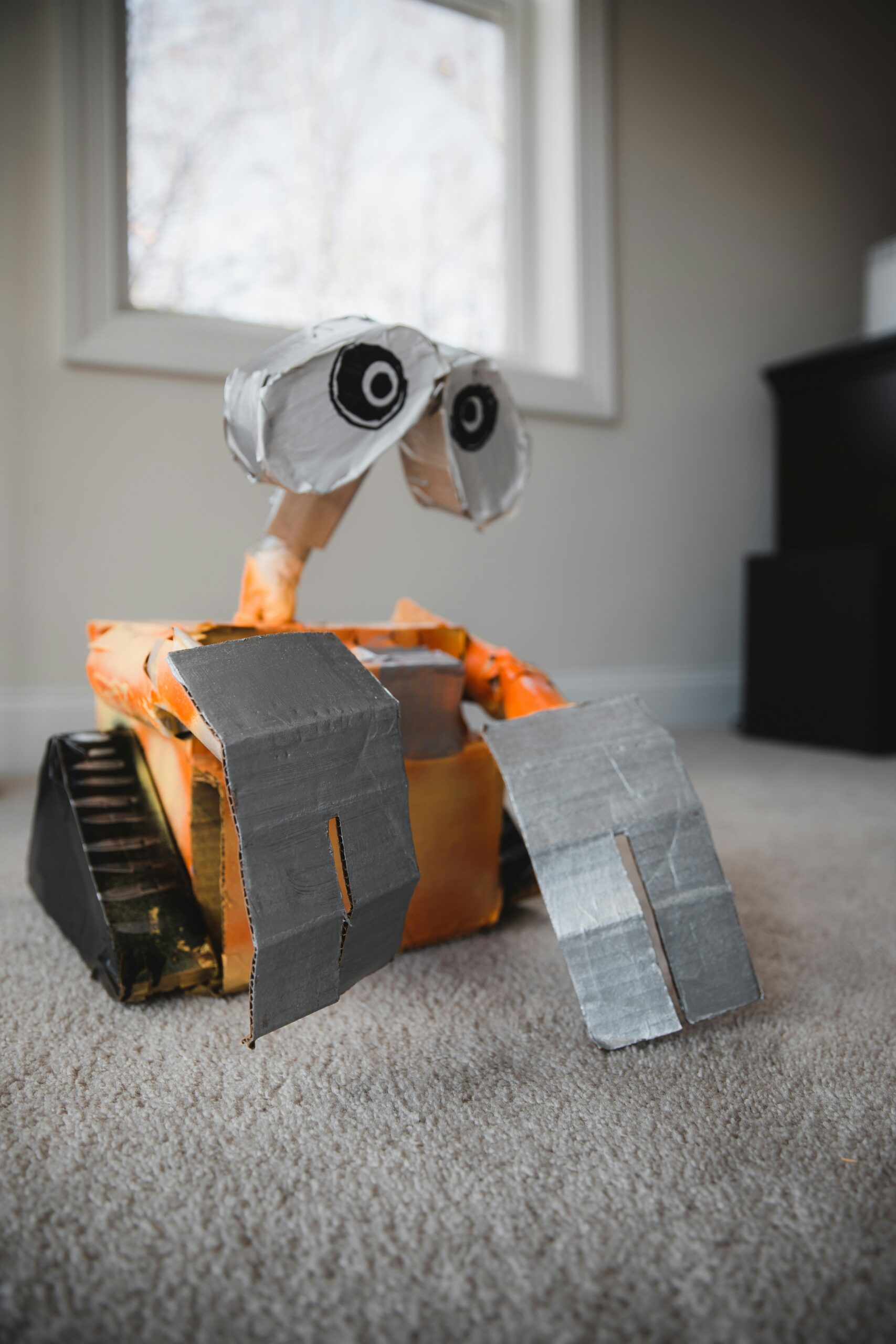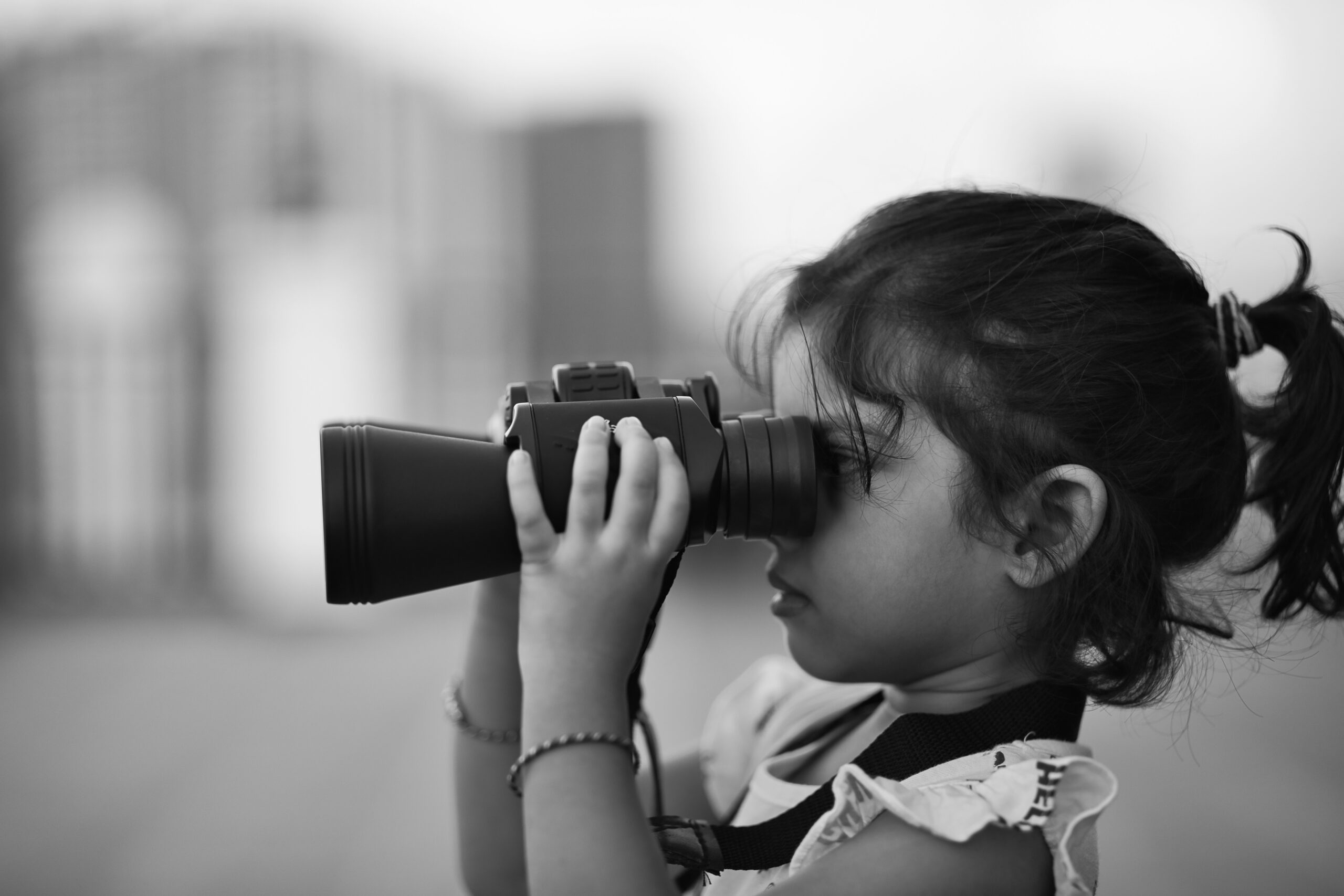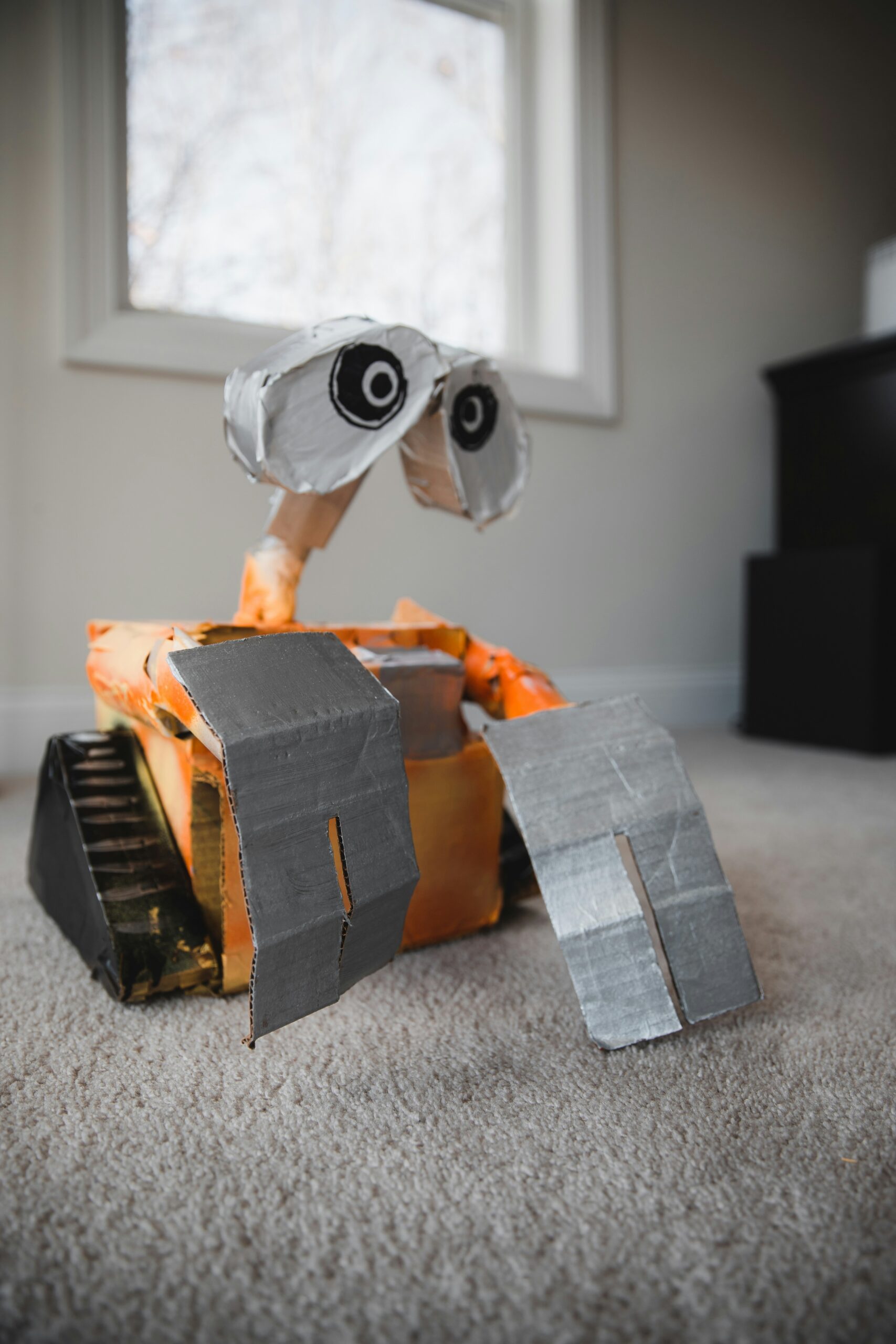Imagine the delight on your child’s face as they explore the world around them, spotting birds, animals, and hidden treasures. But are there binoculars specifically designed for little adventurers like them? The answer is a resounding yes! Delicately crafted with smaller hands in mind, these kid-friendly binoculars provide a superb introduction to the wonders of the natural world. With adjustable eyepieces, sturdy construction, and vibrant colors, these pint-sized optical wonders will unlock a whole new realm of discovery for your curious little ones. So let your child’s imagination soar and their curiosity thrive with binoculars made just for them.
The Need for Kids’ Binoculars
As a parent or guardian, you want to nurture your child’s natural curiosity and foster their love for the great outdoors. One way to encourage their exploration is by providing them with their very own binoculars. Kids’ binoculars are specifically designed with the unique needs and characteristics of children in mind. They are not just miniature versions of adult binoculars; instead, they come with features that make them suitable and safe for young users. In this article, we will delve into the reasons why kids’ binoculars are essential, explore the different types available, learn how to choose the right pair for your child, discuss their benefits, and even touch upon safety and environmental considerations.
Understanding the uniqueness of children’s vision
Children’s vision develops differently from adults, and their visual needs require careful consideration. Their eyes are still maturing, and their depth perception, focus, and ability to track objects are not fully developed. Kids’ binoculars take into account the unique characteristics of their vision and offer features that cater to their needs. With the right pair of binoculars, children can comfortably focus on distant objects, observe nature up close, and explore the world in a way that is both educational and entertaining.
Why general binoculars may not be suitable for kids
You may be wondering why you can’t simply let your child use a pair of adult binoculars. While it may be tempting to share your own binoculars with your child, it is important to understand that regular binoculars are not designed with children’s needs in mind. Adult binoculars are often larger, heavier, and may have controls and adjustments that are too complex for young children to operate. Additionally, the interpupillary distance, which is the distance between the centers of the pupils, is typically wider for adults. Using binoculars not specifically designed for children may result in discomfort, strain, and difficulty in achieving clear vision.
Features of Kids’ Binoculars
When choosing binoculars for your child, there are several key features to consider. Kids’ binoculars are designed to be compact, lightweight, and durable, making them easy to handle and carry for young users.
Size and weight considerations
Children have smaller faces and hands compared to adults, so it is crucial to choose binoculars that are the right size for their comfort and ease of use. Kids’ binoculars typically feature smaller dimensions and reduced weight, allowing them to be held more securely and operated with minimal strain.
The type of materials used
Durability is essential when it comes to kids’ binoculars. You want a pair that can withstand accidental drops and rough handling. Many kids’ binoculars are made from sturdy materials such as rubber armor or reinforced plastic to protect them from wear and tear. The construction materials also contribute to the overall weight and comfort of the binoculars.
Safety features present in kids’ binoculars
Children’s safety is of utmost importance, which is why kids’ binoculars often come with specific safety features. These may include rubber eye cups that are gentle on the eyes, non-slip grips to prevent accidental dropping, and rounded edges to minimize the risk of injury. Some models may also have adjustable eye relief to accommodate children who wear glasses.

Different Types of Binoculars for Kids
Kids’ binoculars come in various types, each tailored to different age groups and purposes. Depending on your child’s age and interests, you can choose from compact binoculars for older kids, toy binoculars for younger kids, or nature exploration binoculars for those who have a passion for outdoor adventures.
Compact binoculars for older kids
Compact binoculars are perfect for older kids who are ready to explore the world beyond their immediate surroundings. These binoculars often have higher magnification and larger objective lenses than toy binoculars, allowing for better image quality and clarity. They are lightweight and portable, making them suitable for longer hikes and nature walks.
Toy binoculars for younger kids
For younger children, toy binoculars are a great introduction to the world of observation and exploration. These binoculars are often brightly colored and designed to be easy to use, with simplified focus mechanisms or no focus adjustment at all. While they may not provide the same level of magnification as compact binoculars, they offer a fun and interactive experience for young children.
Nature exploration binoculars for kids
If your child has a budding interest in wildlife and nature, nature exploration binoculars are the way to go. These binoculars are often equipped with features such as built-in compasses, magnifier lenses, or even digital cameras. They allow children to observe birds, animals, and plants up close, and some models even offer the ability to capture photos or videos for further exploration and documentation.
How to Choose the Right Binoculars for Your Kid
Choosing the right pair of binoculars for your child involves considering their age, interests, and specific needs. Here are some factors to take into account when making your selection.
Considering your child’s age and interests
Age plays a crucial role in determining the appropriate binoculars for your child. Younger children may benefit more from toy binoculars or nature exploration binoculars, while older kids can handle compact binoculars with higher magnification. It is also important to consider their specific interests, whether it’s birdwatching, stargazing, or simply exploring the world around them.
Understanding the different specifications of binoculars
When choosing binoculars, pay attention to specifications such as magnification power, objective lens diameter, field of view, and exit pupil. These factors determine the performance and usability of the binoculars in different situations. Higher magnification provides more detailed views but may lead to a narrower field of view and a shakier image. A larger objective lens diameter allows more light to enter, resulting in brighter images, but it also increases the size and weight of the binoculars.
Factors such as durability and ease of use
Durability is essential, especially for kids who may be prone to accidental drops or mishandling. Look for binoculars with robust construction and materials that can withstand rough treatment. Additionally, consider the ease of use, especially for younger children. Simple focus mechanisms and adjustable eye relief can make a significant difference in their overall experience.

Benefits of Binoculars for Kids
Aside from the sheer joy and excitement they bring, kids’ binoculars provide a range of benefits for children’s development and growth. Let’s explore some of those advantages.
Enhancing learning and exploration
Binoculars offer a fantastic tool for educational exploration. They allow children to observe and study various aspects of the world, from birds in the sky to plants and animals in nature. Through using binoculars, children can develop their observational skills, learn about different species, and foster a sense of wonder for the world around them. It opens up opportunities for learning about geography, biology, and even astronomy.
Encouraging outdoor play and interaction with nature
In an era of technology and screens, encouraging children to spend time outdoors is crucial for their well-being. Binoculars provide a reason for kids to venture outside and engage with nature. Whether it’s birdwatching in the park, stargazing in the backyard, or exploring the details of a bug’s habitat, binoculars create a sense of adventure and discovery that captivates children’s imagination and encourages them to explore the great outdoors.
Developing fine motor skills and hand-eye coordination
Using binoculars requires a level of coordination and control that contributes to the development of fine motor skills and hand-eye coordination in children. Focusing on distant objects, holding the binoculars steady, and adjusting the settings all require precise movements and dexterity. By actively engaging with binoculars, children can improve their ability to manipulate objects, sharpen their hand-eye coordination, and develop a greater sense of control over their physical actions.
Popular Kids’ Binocular Brands
When it comes to choosing binoculars for your child, there are several well-known brands that offer reliable and quality options. Here are a few leading brands in the market.
Introduction to leading brands in the market
-
Celestron: Known for their wide variety of binoculars, Celestron offers options suitable for both younger and older kids. Their products often feature ergonomic design, durable construction, and good optical performance.
-
Educational Insights: This brand focuses on creating educational toys and tools, including binoculars designed specifically for young children. Their binoculars are colorful, easy to use, and encourage interactive learning experiences.
-
Bushnell: A trusted name in the optics industry, Bushnell offers a range of binoculars suitable for kids of different ages. Their products often come with features such as rubber armor for durability and easy-grip surfaces for added safety.
Comparing the qualities, prices, and features of different brands
When comparing different brands, consider factors such as optical quality, durability, comfort, ease of use, and price. Read reviews and customer feedback to gain insights into the performance and reliability of the binoculars. Additionally, take into account your child’s specific needs and interests to determine which brand and model will best suit their requirements.

Top Rated Binoculars for Kids
With a multitude of options available in the market, it can be overwhelming to choose the best binoculars for your child. To simplify your selection process, we have reviewed some of the top-rated binoculars for kids.
Review of the best binoculars for kids in the market
-
Kids Adventure Binoculars: These binoculars are designed for ages 3 and up, perfect for young explorers. They offer 4x magnification and a sturdy build, making them suitable for little hands. The bright colors and lightweight design add to the overall appeal for young adventurers.
-
Kidwinz Shock Proof Binoculars: With 8×21 magnification, these binoculars are ideal for older kids who want a bit more power in their observation. They feature a shockproof design, making them durable and able to withstand rough treatment. The adjustable eye widths provide comfort for various ages, and the included carrying case ensures easy transportation.
-
Carson Hawk Kids Binoculars: These compact binoculars are well-suited for nature enthusiasts. With 30mm objective lenses and 5x magnification, they offer clear images while remaining lightweight for easy handling. The rubber coating provides durability, and the fold-down eye cups accommodate eyeglass wearers.
Pros and cons of these top-rated models
Each of the reviewed binoculars has its own set of pros and cons. The Kids Adventure Binoculars are perfect for young children, but their limited magnification may not satisfy older kids. The Kidwinz Shock Proof Binoculars offer higher magnification, but their slightly larger size may not be suitable for very young children. The Carson Hawk Kids Binoculars strike a balance between size, magnification, and durability but may have slightly higher price points. Consider these factors along with your child’s needs to make an informed decision.
Safety Tips when Using Binoculars for Kids
Ensuring the safety of your child when using binoculars is crucial. Here are some safety tips to keep in mind.
Using the neck strap correctly
Most kids’ binoculars come with a neck strap to help keep them secure and prevent accidental dropping. It is essential to teach your child how to use the strap correctly and to supervise them until they become comfortable handling the binoculars independently. Make sure the strap is adjusted to the appropriate length and that it fits snugly without causing discomfort.
Proper cleaning and maintenance of binoculars
Regular cleaning and maintenance are important to keep the binoculars in good working condition. Teach your child how to clean the lenses properly using a lens cleaning cloth or lens cleaning solution. Avoid using harsh chemicals or abrasive materials that could scratch or damage the lenses. Additionally, store the binoculars in a safe and dry place when not in use to prevent moisture buildup or accidental damage.
Supervision and guidance when using binoculars
While binoculars can provide hours of entertainment and educational value, it is essential to supervise your child when they are using them, especially if they are very young. Ensure they are using the binoculars correctly and safely, focusing on objects at a comfortable distance, and not straining their eyes. Provide guidance and answer any questions they may have to enhance their experience and ensure their safety.
Environmental Impact of Binoculars
Considering the environmental impact of binoculars is becoming increasingly important in today’s world. Here are some tips for more environmentally responsible use and disposal of binoculars.
Understanding the materials used in binoculars
Different binoculars are made from various materials, including metals, plastics, and glass. When purchasing binoculars, choose brands that prioritize sustainability and eco-friendly manufacturing practices. Some manufacturers use recycled materials or employ environmentally responsible production methods. By understanding the materials used, you can make a more informed decision and support companies that align with your environmental values.
Tips for environmentally responsible use and disposal of binoculars
To minimize the environmental impact of binoculars, consider the following tips:
-
Use rechargeable batteries: If your binoculars have battery-powered features, opt for rechargeable batteries instead of disposable ones. This reduces waste and eliminates the need for regularly replacing batteries.
-
Donate or recycle: If your child outgrows their binoculars or if the binoculars are no longer in working condition, consider donating them to organizations or individuals who may benefit from them. If recycling is not an option, dispose of the binoculars responsibly according to local regulations.
-
Use consciously: Encourage your child to use their binoculars mindfully, focusing on quality experiences rather than excessive consumption. By instilling a sense of appreciation for their belongings and the environment, children can develop a more sustainable mindset.
Educational Applications of Kids’ Binoculars
Kids’ binoculars have a range of educational applications that can enhance various aspects of your child’s learning experience. Let’s explore some of the ways they can be integrated into lesson plans and promote scientific inquiry.
Integrating binoculars into lesson plans
Binoculars can be integrated into various lesson plans, allowing children to explore the natural world or even observe urban environments. For example, in a biology lesson, students can use binoculars to study birds and their behavior. In a geography lesson, binoculars can be used to view distant landmarks or examine geographical features. By incorporating binoculars into lesson plans, educators can create hands-on and engaging learning experiences.
Promoting scientific inquiry with binoculars
Binoculars provide a tool for children to engage in scientific inquiry and explore the world around them. They can develop hypotheses, make observations, and record data as they study different plants, animals, or natural phenomena. Through scientific inquiry with binoculars, children can develop critical thinking skills, problem-solving abilities, and a thirst for knowledge.
Real-life experiences and field trips with binoculars
Field trips and outdoor excursions are fantastic opportunities for children to put their binoculars to practical use. Whether it’s visiting a local park, attending a birdwatching event, or going on a nature hike, these experiences allow children to apply what they have learned through their binoculars and engage with their environment more deeply. Field trips with binoculars encourage teamwork, observation, and a sense of connection to the natural world.
In conclusion, kids’ binoculars are more than just toys. They offer a unique opportunity for children to explore, learn, and engage with the world around them. By understanding the uniqueness of children’s vision, choosing the right binoculars, and providing a safe and supportive environment, you can help foster their curiosity and cultivate a lifelong love for nature and learning. So, take the leap and gift your child a pair of binoculars today, and watch as they embark on countless adventures right outside their window.

